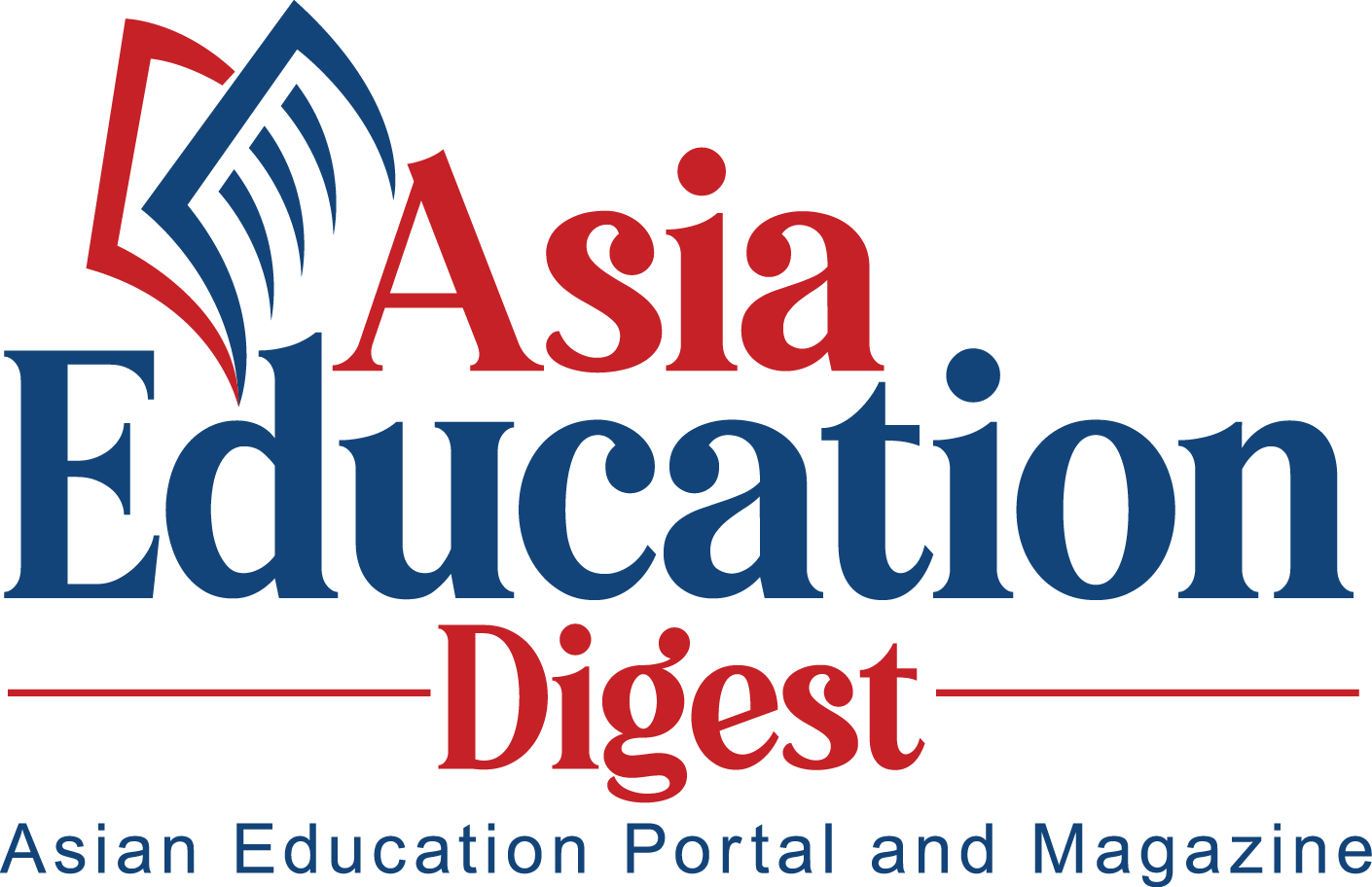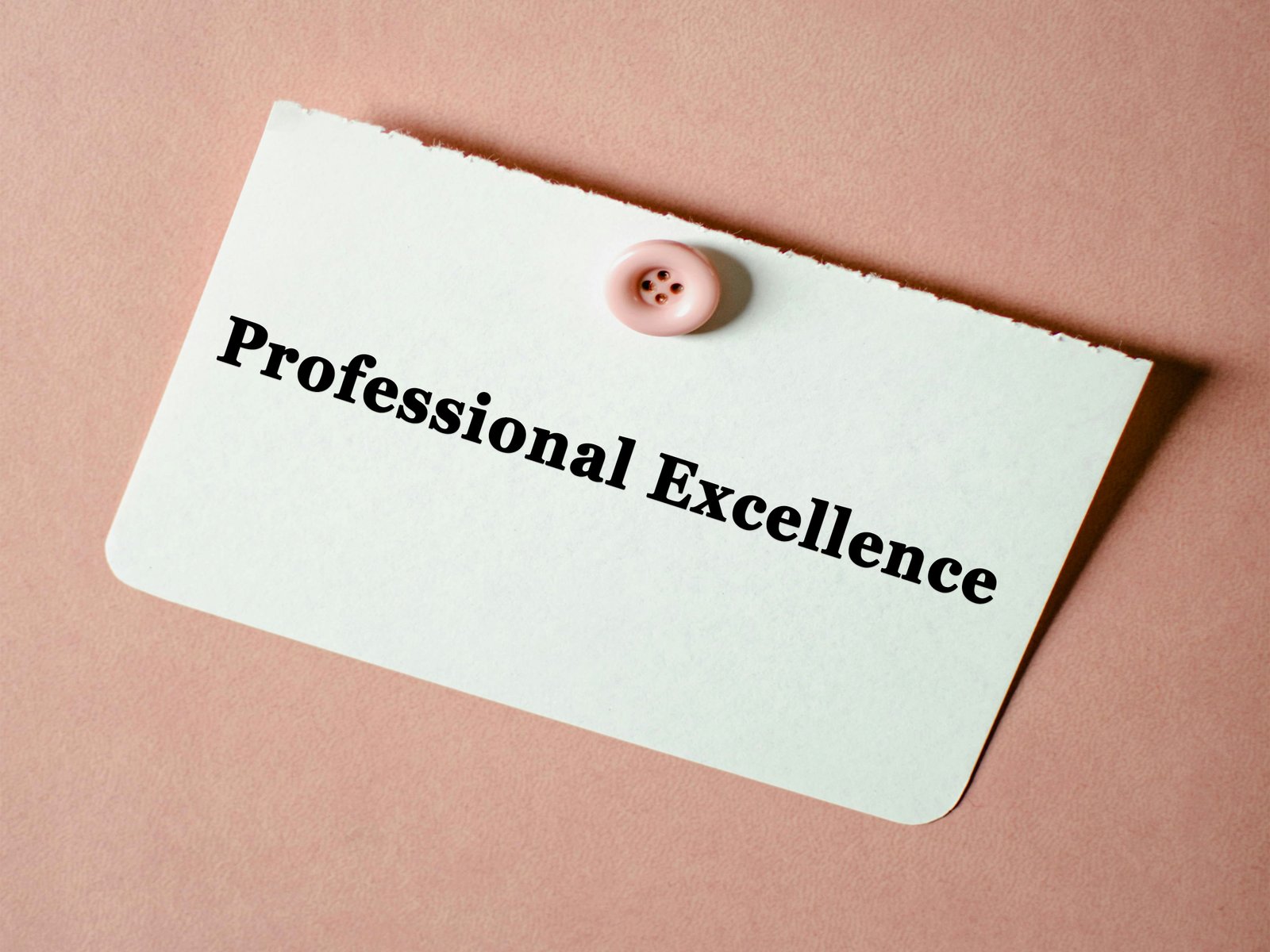Article:
The contemporary professional landscape is a dynamically evolving ecosphere that makes professional excellence mandatory. It isn’t about perfection; it’s about developing the right mindset, refining essential skills, and embracing opportunities for growth.
So, what differentiates those who excel from the rest? Is it their knowledge, ability to lead, or resilience in the face of challenges? The answer lies in a combination of emotional intelligence, conflict resolution, and management, the right attitude towards ensuring diversity, equity, and inclusion in teams, time management, strong communication, and a proactive approach to professional development.
This article explores the key components of professional success, from cultivating a strong personal brand and mastering conflict resolution to fostering inclusivity, leadership, and continuous learning. Whether you’re starting your career or aiming for leadership, these insights will equip you with the tools to enhance your capabilities and stand out in any industry.

Emotional Intelligence: Meet the Game-Changer in Professional Growth
Emotional Intelligence (EI) is the capacity to recognize, understand, and manage one's own emotions, as well as to comprehend and influence others’ emotions. This ability is the foundation for building professional excellence because it can enhance various aspects of workplace performance and interpersonal relationships.
The Key Components of Emotional Intelligence
Emotional intelligence is a valued skill, while many individuals are born empaths others can cultivate this skill. Whether to cultivate or enhance, if you pay attention to certain components, you can master this skill.
Self-Awareness
Understanding one's emotions, strengths, weaknesses, values, and drivers. This awareness enables individuals to recognize how their feelings affect their thoughts and behaviors, leading to better decision-making.
Self-Regulation
It is the ability to manage or redirect disruptive emotions and impulses and adapt to changing circumstances. Professionals who can self-regulate, maintain, or control and keep their composure despite unfavorable situations, foster trust and integrity.
Motivation
Often individuals with higher potential get lost in the crowd of ambitious people primarily because of the lack of motivation or because they look for external sources to motivate them. Let’s not forget that motivated individuals are resilient, optimistic even in the face of failure, and dedicated to personal and organizational goals.
Empathy
Considering others' feelings, especially when making decisions. Empathy allows professionals to manage relationships more effectively, leading to better collaboration and conflict resolution.
Social Skills
Managing relationships to guide, influence, and develop others. Strong social skills are crucial for communication, leadership, and building networks.
Impact of Emotional Intelligence on Professional Excellence
An emotionally dynamic and intelligent individual thrives in his or her professional as well. The components that we just elaborated on enable individuals to remain at the top of their game, perform their best, and thus excel in their job roles from time to time.
Enhanced Leadership
Leaders with high EI can inspire and motivate their teams, navigate challenges adeptly, and foster a positive work environment.
Improved Collaboration
Emotionally intelligent individuals recognize and leverage the strengths of their colleagues, leading to more effective teamwork and better outcomes.
Effective Conflict Resolution
By understanding and managing emotions, professionals can address conflicts constructively, maintaining harmony and productivity in the workplace.
Adaptability
High EI equips individuals to navigate change and uncertainty with resilience, ensuring sustained performance in dynamic environments.
How to Develop Emotional Intelligence?
Besides working for a higher IQ we need to balance it well with an equal or standard emotional intelligence. Here’s how you can cultivate emotional intelligence.
- Practice self-reflection by regularly assessing your emotions and reactions to understand your emotional triggers and patterns.
- Engage in mindfulness practices through activities like meditation to enhance self-awareness and emotional regulation.
- Try active listening by paying close attention to others' words and emotions, fostering empathy and stronger connections.
- Always seek feedback; this encourages constructive criticism to gain insights into your emotional behaviors and also helps you to identify areas for improvement.
By cultivating emotional intelligence, you can significantly enhance your interpersonal relationships, decision-making abilities, and overall effectiveness, thereby laying a strong foundation for achieving excellence in your career.

Conflict Resolution and Management: A Key to Professional Excellence
Successfully navigating through adverse workplace scenarios is a key component for upgrading professional excellence. Conflict resolution and management are essential components of professional excellence because they directly influence workplace harmony, productivity, and individual growth. Effectively navigating conflicts fosters a positive environment where teams can thrive and organizational goals can be met.
Understanding Conflict Resolution and Management
Conflict resolution involves constructively addressing disputes and disagreements for outcomes that satisfy all parties involved, or benefit the group as a whole. Effective conflict management seeks to resolve disagreements with positive outcomes that satisfy all individuals involved or are beneficial to the group.
Strategies for Effective Conflict Resolution
Conflict resolution, especially in an organization, calls for a properly organized drive through carefully made strategies and well-executed plans. Here’s what you can do ensure proper conflict resolution.
- Maintain composure during conflicts to prevent escalation. Recognize and manage your emotions to stay neutral and focused on understanding the issue.
- Dissect the conflict to uncover the primary concern. Addressing the root cause prevents recurrence and leads to more effective solutions.
- Actively engage with all parties to understand their perspectives completely. This fosters empathy and opens avenues for collaborative problem-solving.
- Encourage a cooperative approach where all involved contribute to finding mutually beneficial resolutions, strengthening team cohesion.
- Invest in conflict resolution training to enhance your skills. Organizations like the National Conflict Resolution Center offer programs to develop these competencies.
Benefits of Mastering Conflict Resolution
There are not one but several benefits that make this an important skill to master for your professional development. Here are some of the benefits that are common for every organization.
- Resolving conflicts amicably fosters trust and strengthens professional relationships.
- A harmonious work environment minimizes distractions, allowing teams to focus on achieving objectives and thus boost productivity.
- Developing conflict resolution skills enhances emotional intelligence and adaptability, contributing to overall professional development.
By integrating effective conflict resolution and management strategies into your professional repertoire, you contribute to a more collaborative and efficient workplace, paving the way for personal and organizational success.

Diversity, Equity and Inclusion: Ensuring Wholesomeness in the Taskforce
Diversity, Equity, and Inclusion (DEI) are foundational pillars in cultivating professional excellence within organizations. Embracing DEI initiatives not only fosters a more equitable workplace but also drives innovation, employee satisfaction, and overall organizational plurality and success.
Understanding Diversity, Equity and Inclusion
An organization that employs people from different regions, with different cultural backgrounds, skills and ethnicity leverage its advantages. A diversified team can nurture themselves better, support and work together more cohesively towards the common purpose. Similarly, a team that’s treated with equality and where inclusion is practiced have their own benefits. Let’s dig into the facts:
Diversity encompasses the presence of differences within a given setting, including race, gender, age, ethnicity, sexual orientation, disability, and more.
Equity involves ensuring fair treatment, access, and opportunities for all individuals, while striving to identify and eliminate barriers that have prevented the full participation of some groups.
Inclusion refers to creating environments in which any individual or group can feel welcomed, respected, supported, and valued to fully participate.
Here’s What Happens When You Practice Diversity, Equity and Inclusion
A diversified workforce, where individuals are treated equally and an inclusive workspace is a basic requirement for a healthy working environment. As someone in the decision-making level of an organization, when you ensure these are implemented in the organization it enhances your professional brilliance. The discipline and integrity required to practice these improve professional excellence. Let’s get into the details.
Enhanced Innovation and Problem-Solving
A diverse workforce brings wider perspectives, leading to more creative solutions and improved decision-making. Exposure to diverse viewpoints fosters creative problem-solving and innovation. So, by practicing DEI you create dynamic and innovative teams sharp enough for problem-solving – highly desirable teams for any organization.
Improved Employee Engagement and Retention
Inclusive workplaces where employees feel valued and respected lead to higher job satisfaction, increased morale, and reduced attrition rates. Employees in such environments are more likely to look forward to work, take pride in their roles, and remain with the company for the long term.
Broader Talent Pool
Commitment to DEI attracts a wider range of candidates, enhancing the organization's ability to recruit top talent from various backgrounds.
Enhanced Reputation and Brand Positioning
Organizations that prioritize DEI are viewed more favorably by clients, customers, and the external public, strengthening their brand image and market position.
Strategies to Implement Diversity, Equity and Inclusion
You need concrete plans to make anything work successfully; and when it’s about implementing diversity, equity, and inclusion across an organization you simply cannot afford to not have a strategy. Pin this on your board and you will thank us later!
Firstly, leaders must remain committed to the purpose. They must actively demonstrate and advocate for DEI values, setting the tone for the entire organization. Inclusive leadership is intrinsic to fostering a culture of diversity, equity, and inclusion.
Secondly, the organization must provide regular DEI training to help employees recognize biases and develop inclusive behaviors, contributing to a more equitable workplace.
Finally, you must establish policies that promote equity and inclusion and evaluate them regularly to ensure that DEI efforts are effective and aligned with organizational goals.
By integrating DEI principles into organizational practices, organizations can create environments that not only uphold justice and fairness but also drive professional excellence through diverse perspectives and inclusive cultures. It can fetch you goodwill and more that can do wonders for the brand.

Personal Branding & Professional Image: Too Crucial Factors to Ignore for Professional Excellence
Personal branding and maintaining a strong professional image are two of the most important elements for achieving professional excellence. They shape how individuals are perceived in their industries, and thus have profound influence over career advancement opportunities, and establish one's unique value proposition.
Understanding Professional Branding & Professional Image
The terms explain quite a bit about what professional branding and image are but you must have a clear understanding of the two to use them efficiently for enhancing your professional excellence.
Personal branding is the intentional, strategic practice of defining and expressing your value. It involves highlighting your strengths, establishing a reputation, building trust, and communicating the unique attributes you bring to your field.
Professional image refers to the perception others have of you in a professional context, encompassing your appearance, behaviour, communication style, and online presence. A positive professional image aligns with organizational values and enhances credibility.
Workable Strategies for Building Professional Image and Branding
You need carefully planned strategies for creating your professional image, over a pre-decided time frame leading to a desirable brand image and reputation.
- Reflect on your strengths, skills, and experiences, especially ones that differentiate you from others. This self-awareness forms the foundation of your brand.
- Ensure that your brand is consistently represented across all platforms, including social media, professional networks, and even personal interactions. This consistency reinforces your brand identity.
- Leverage your brand on platforms like LinkedIn to showcase your expertise, share industry insights, and connect with professionals in your field. An active and professional online presence enhances visibility and credibility.
- Stay updated with industry trends and acquire new skills. Continuous learning demonstrates a commitment to your profession and adds value to your brand.
- Solicit feedback, regularly, from peers and mentors to understand how your professional image is perceived. Use this information to make necessary adjustments and improvements.
Why Should You Go an Extra Mile For Building Your Brand and Professional Image
Your professional image plays a crucial role in determining the output of your efforts. Do you need any more reason to think about your professional reputation and create it strategically? Maybe you need to know these as well.
Career Advancement
A well-crafted personal brand can open doors to new opportunities, promotions, and collaborations.
Increased Credibility
Professionals with a strong personal brand are often viewed as experts, enhancing trust among colleagues and clients.
Expanded Network
A positive professional image attracts like-minded professionals, leading to a broader and more influential network.
By intentionally developing your brand and maintaining a professional image, you position yourself for greater success and recognition in your career, than you can achieve without it.

Time Management: Adds an Edge to Your Professional Excellence
Effective time management is a cornerstone of professional excellence, enabling individuals to maximize productivity, reduce stress, and achieve a harmonious work-life balance. By strategically organizing and allocating time, as a professional, you can ensure that critical tasks are completed efficiently and goals are met consistently.
Key Strategies for Improving Your Time Management Skills
Look at anyone who is successful, you will see that they are punctual, disciplined, and respect their time. These are quite common among all successful people. When it comes to improving your professional brilliance, you ought to manage your time well and do it like a pro. Here’s what you need to stick to:
Prioritization
Identify tasks based on their urgency and importance. You can use verified tools like the Eisenhower Matrix and others that can assist in distinguishing between tasks that are urgent and important, allowing for more informed decision-making.
Goal Setting
Establish clear, achievable objectives to provide direction and motivation. Implementing SMART goals — Specific, Measurable, Achievable, Relevant, and Time-bound, these ensure that goals are well-defined and attainable.
Time Blocking: Allocate specific periods for different tasks or groups of tasks. This technique enhances focus and productivity by designating uninterrupted intervals for concentrated work.
Single-Tasking: Focus on one task at a time to improve efficiency and quality of work. Contrary to multitasking, single-tasking reduces errors and accelerates task completion.
Regular Breaks: Incorporate short breaks to rejuvenate and maintain high levels of focus. Methods like the Pomodoro Technique, which involves working for 25-minute intervals followed by 5-minute breaks, can enhance productivity.
Utilize Technology: Leverage digital tools and applications designed for task management, scheduling, and reminders. These tools can streamline workflows and ensure that deadlines are met.
Set Boundaries: Establish clear limits to minimize interruptions and manage expectations. This includes learning to decline additional tasks that may interfere with or block your existing priorities.
These are a few tried and tested time management strategies that you can use or incorporate anything that works for you. Try anything that can enhance your efficiency, achieve your objectives more effectively, and contribute significantly to organizational success.

Adaptability & Continuous Learning: Two Staple Ingredients for Professional Brilliance
Adaptability and continuous learning are pivotal components in achieving professional excellence. In today's rapidly evolving work environment, the ability to adjust to new circumstances and the commitment to ongoing personal and professional development are essential for sustained success.
Adaptability in the Professional Sphere
Adaptability refers to the capacity to adjust effectively to changing conditions, unexpected challenges, and new environments. Professionals who exhibit adaptability are better equipped to handle workplace transformations, technological advancements, and evolving job roles. This flexibility not only enhances individual performance but also contributes to organizational resilience and competitiveness.
Continuous Learning as a Catalyst for Adaptability
Continuous learning involves the ongoing pursuit of knowledge and skills throughout one's career. It encompasses formal education, on-the-job training, self-directed study, and experiential learning. By engaging in continuous learning, professionals remain updated with industry trends, technological innovations, and best practices, thereby enhancing their adaptability to new situations, challenges, and opportunities.
Strategies to Foster Adaptability and Continuous Learning
Pursuance of professional brilliance is no mean task and hence calls for strategic planning and effective execution of the same. Here we suggest some potentially effective strategies for being adaptive and adhering to continuous learning.
Growth Mindset: Cultivate the belief that abilities and intelligence can be developed through dedication and hard work. This mindset will encourage you to embrace challenges and view failures as learning opportunities.
Diverse Experiences: Engage in cross-functional projects, collaborate with colleagues from different backgrounds, and explore different organizational roles to broaden skill sets and perspectives.
Set Learning Goals: Establish specific, measurable objectives for acquiring new competencies or knowledge areas, and regularly assess progress toward these goals.
Leverage Learning Resources: Utilize available resources such as workshops, webinars, online courses, and professional networks to stay informed about industry developments and emerging skills.
Reflect and Apply: Regularly reflect on experiences to identify lessons learned and apply this knowledge to future situations, thereby reinforcing adaptability and continuous improvement.
Why is it So Important to Stick to Integrating Adaptability and Continuous Learning?
Even after you have landed your dream job or doing well in your career, you cannot afford to stop learning or being adaptable to the changes, rather, evolutions in your industry and professional domain. Here are a few important reasons that make adaptability and continuous learning mandatory.
Enhanced Problem-Solving: Adaptable professionals can approach challenges with more innovative solutions, drawing from a diverse knowledge base.
Career Advancement: A commitment to continuous learning makes you capable of new opportunities and career progression because those individuals are seen as proactive and forward-thinking.
Organizational Agility: Teams composed of adaptable members who value continuous learning can coordinate more effectively in response to market shifts and organizational changes.
When you prioritize adaptability and continuous learning, as a professional, it not only enhances your career trajectory but also significantly contributes to the overall success and adaptability of your organization.
Achieving professional excellence is an ongoing journey that involves cultivating the right mindset, honing essential skills, and embracing continuous growth. By mastering emotional intelligence, conflict resolution, diversity and inclusion, personal branding, time management, adaptability, and continuous learning, you can position yourself as a leader and invaluable asset within your organization.
Success in the current professional landscape requires a commitment to learning, resilience in the face of challenges, and the ability to evolve with changing environments. Workspace, in any industry, is dynamic and demands your best shot. So, whether you're embarking on your career or striving for leadership, integrating these core components will empower you to stand out, lead with confidence, and achieve success that you can sustain.
Reflect on your strengths, refine your skills, and take proactive steps to become a more adaptable, emotionally intelligent, and purpose-driven professional. Embrace continuous learning, stay resilient, and position yourself ahead in your career!


